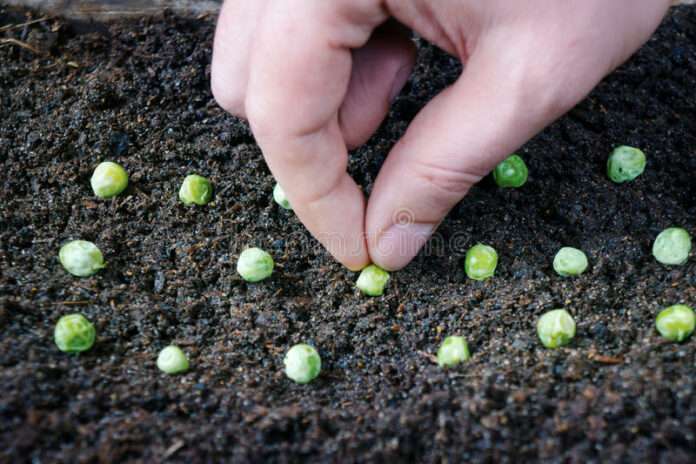K-State horticulture expert lists a few fun activities to get the season going
MANHATTAN, Kan. – Like many eager gardeners, Ward Upham is about tired of winter. There’s just a certain itch to get out and work on flower and vegetable beds.
Fortunately, Upham said, some early work can be done right now.
“Try planting peas as soon as the soil dries and the soil temperature reaches 40 degrees Fahrenheit,” said Upham, a horticulture expert with K-State Research and Extension. “There are several types of peas we can plant in Kansas; probably the most common is the shelling pea, and the old standard in this group is Little Marvel.”
Other varieties that do well in Kansas are Green Arrow, Knight, Maestro, Burpeeana and Mr. Big. “All of these are early maturing types that allow us to harvest a crop before the hot weather arrives and stops production,” Upham said.
Snow peas, common in stir-fry, have a crisp, edible pod. Upham recommends Dwarf Grey Sugar and Mammoth Melting Sugar.
“Sugar snap peas resemble shelling peas but have a thick, fleshy pod and can be eaten fresh, steamed or cooked,” Upham said. “Like snow peas, they are not shelled, but eaten pod and all.”
Upham’s recommendations for sugar snap peas include Sugar Bon, Sugar Ann, Super Sugar Snap and Sugar Sprint.
He said peas should be planted shallow – about one-half inch deep – to encourage rapid germination and emergence. Seeds should be spaced 2 inches apart in a row.
“Many people plant two rows 6 to 8 inches apart so the floppy plants can support one another,” Upham said. “For some older varieties, this may not be enough. They may need trellising to support the growing vines. You might consider installing fence to keep rabbits away.”
Some other early gardening chores to cure the winter blahs, according to Upham, include:
• Start lettuce transplants indoors. “Transplants allow lettuce to mature earlier so that it escapes the excessive heat that can lead to a strong flavor and bitterness,” he said. Transplants should be started 4 to 5 weeks before moving the plants outdoors.
• Implement control measures for iris leaf spot by removing old, dead leaves. Iris leaf spot is a disease that attacks the leaves and occasionally the flower stalks and buds of iris. The disease over-winters in old leaves, so it’s important to remove and destroy thm. Wet weather, common in early spring, encourages infection. Heavily-infected plants from last year should be sprayed with a fungicide containing chlorothalonil.
• Prune deciduous shrubs. Not all shrubs need to be pruned (such as witch hazel), but others need to be pruned to maintain or reduce size, rejuvenate growth or to remove diseased, dead or damaged branches. Shrubs that flower in the spring should not be pruned until immediately after flowering.
To help gardeners and others maintain their home landscapes, Upham and his colleagues in K-State’s Department of Horticulture and Natural Resources publish a weekly Horticulture Newsletter. The newsletter is available to view online or can be delivered by email each week.
Interested persons can also send their garden- and yard-related questions to Upham at [email protected], or contact your local K-State Research and Extension office.
FOR PRINT PUBLICATIONS: Links used in this story
K-State Department of Horticulture and Natural Resources, https://hnr.k-state.edu
K-State Horticulture Newsletter, https://hnr.k-state.edu/extension/info-center/newsletters/index.html
K-State Research and Extension local offices, www.ksre.k-state.edu/about/stateandareamaps.html
K State Research and Extension is a short name for the Kansas State University Agricultural Experiment Station and Cooperative Extension Service, a program designed to generate and distribute useful knowledge for the well being of Kansans. Supported by county, state, federal and private funds, the program has county extension offices, experiment fields, area extension offices and regional research centers statewide. Its headquarters is on the K State campus in Manhattan. For more information, visit www.ksre.ksu.edu. K-State Research and Extension is an equal opportunity provider and employer.
Story by:
Pat Melgares
785-532-1160
[email protected]
For more information:
Ward Upham
785-532-6173
[email protected]





